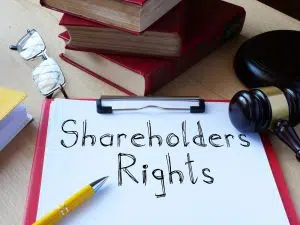
They can leave the company for personal reasons or take some of it back by gifts, but if they want to sell all that’s left in stock then there are only two options: either transfer through a gift/sale relationship with another person(s) organization OR delete these transactions from your account.
The new shareholder information must be recorded in the company’s register of members. Your organization also needs to notify Companies House about this change by submitting an annual Confirmation Statement, which can done through their online portal or via post for those companies located within Great Britain .
Shares ownership Transfer
Limited company shares can be gifted or sold to other individuals by using a stock transfer form ( free open source template download). The person in charge of filling out this paperwork officially transfers ownership from one individual to another.
The shareholders of the company will then each receive a share certificate, and if necessary they’ll need to pay their purchase price for it.
Shareholder’s death
If a shareholder dies, the ownership of their shares can be passed on to a named beneficiary, if outlined in their will. If this happens, the company director can fill out a stock transfer form. However, this may not be allowed if there are restrictions in place within the articles of association that prohibit share transfers to non-members.
Many companies include provisions in a shareholder’s agreement to deal with the death of a shareholder. It is common for an agreement to dictate that upon the death of a shareholder, the shares will be passed on to a specific person or be made available for purchase by the company and their existing company members.
The death of a shareholder is a particularly complex area for many businesses, so we recommend consulting a solicitor when preparing the shareholders agreement.
Forcing a shareholder to leave
Thus, the best way to avoid disputes is by ensuring that your shares are well-drafted in order for them not be susceptible of being revoked. If there was no provision allowing members who sell their stake within a company’s equity exchange with other parties; then it would only make sense if these individuals were compelled via legal obligation (i e they lost money) which could result from agreements between all parties involved – including both the buyer/seller.
The first thing you can do to resolve an issue is negotiation. Most shareholders would be willing to offer a fair price for the minority’s shares, but if they decline then there are severe measures available like winding up company business or even starting legal proceedings in order make them sell their shareholdings at any cost.
However, this process can only be performed should the minority have below 25% of the issued shares. In order to wind up the company you will need a 75% majority of the shareholder’s votes to pass a specific motion.
Updating member’s register
It is a legal requirement for a limited company to keep a member’s register. The register is used to record the names and addresses of every member (or guarantor should the company be limited by guarantee), details of the shares they hold, the date they were incorporated as a member of the company and the date they ceased to be a member.
A shareholder will become a member on the date that they purchase the shares. They will also stop being a member on the date that their shares are sold to another person.
Informing Companies House
You will need to inform Companies House when joints the company or if they leave. This task is usually undertaken by the company secretary or a director. The name and the exit of every new shareholder or date of membership in Part 4 of the subsequent yearly return needs to be recorded. Again this can be completed simply by filing the yearly return earlier.
Read more: Are shareholders liable for company debts?
Conclusion
Removing a shareholder from a company in the UK can be a complicated process, and it is important to understand the legal and procedural requirements that must be followed.
The first step in removing a shareholder is to determine whether the company has the power to do so under its articles of association. The articles of association is a legal document that outlines the rules and regulations of the company, including the rights and responsibilities of shareholders. If the articles of association do not provide for the removal of shareholders, the company may need to amend its articles of association to give itself the power to do so.
If the company has the power to remove shareholders, it must follow the procedures outlined in its articles of association. This may involve giving notice to the shareholder in question and providing them with an opportunity to respond to the proposed removal.
If the shareholder does not agree to the removal, the company may need to take legal action to remove the shareholder. This may involve applying to the court for an order to remove the shareholder, or seeking the assistance of a licensed insolvency practitioner to place the company into liquidation.
It’s important to note that the process of removing a shareholder from a company can be time-consuming and costly, and it’s important to seek legal advice to ensure that the process is carried out correctly and in accordance with the law.
With over three decades of experience in the business and turnaround sector, Steve Jones is one of the founders of Business Insolvency Helpline. With specialist knowledge of Insolvency, Liquidations, Administration, Pre-packs, CVA, MVL, Restructuring Advice and Company investment.
